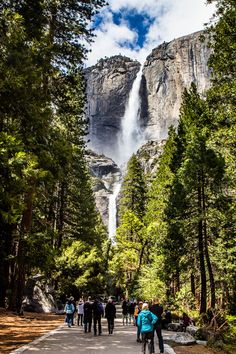This Is The Best Time To Visit Yosemite National Park In California

Visiting Yosemite National Park in California is a breathtaking experience no matter the season, but for many, the best time to go is during late spring, from late May through early June. This period offers a perfect balance between the accessibility of park facilities and the natural beauty on display.
One of the main attractions during this time is the park’s impressive waterfalls. Snowmelt is at its peak, causing Yosemite’s falls to flow at their most powerful and majestic. The iconic Yosemite Falls, Bridalveil Fall, and Vernal and Nevada Falls are particularly stunning. The sheer volume of water cascading down the cliffs creates mesmerizing mists and rainbows that add to the allure of these natural wonders.
The late spring weather in Yosemite is also generally mild and pleasant, with daytime temperatures comfortable for hiking and exploring. The warmer weather means that most of the snow has melted at lower elevations, so trails are accessible for those looking to hike without specialized winter gear.
Wildflower enthusiasts will also find late spring an ideal time to visit. Meadows begin to bloom with a vibrant array of wildflowers, including lupines, Sierra columbines, and California poppies, providing excellent opportunities for photography or simply enjoying the natural splendor.
While this time of year offers many perks, it’s also important to note that it precedes peak summer crowds. Visitors who come before the busy summer season can enjoy less crowded trails and have an easier time finding accommodations within or near the park.
Access to some parts of the park like Tioga Road and Glacier Point depends heavily on snow conditions from the preceding winter; however, by late May or early June these areas often start becoming accessible too.
For all these reasons—breathtaking waterfalls at their prime, beautiful hiking weather, wildflowers in bloom, and smaller crowds—late spring emerges as the best time to experience Yosemite National Park’s grandeur.






